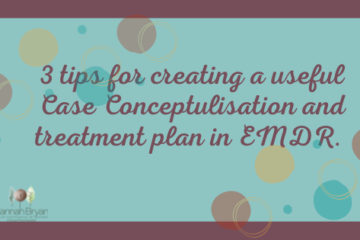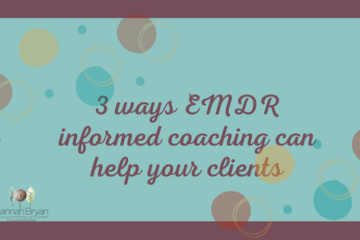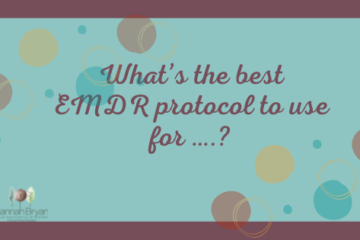In my supervision groups we talk a lot about our clients fears and their hopes for the future. In doing this future focused work we often need to clarify the difference between a flashforward and a future template. Read on if you too would like more clarification on this.
What is a flashforward?
The flashforward protocol was developed by Robin Logie and Ad de Jongh Click here to read their paper. It was originally developed as a treatment for anxiety. It was acknowledging that it’s often the fear of a catastrophe, the worst case scenario that maintains peoples current anxiety. But often we don’t lean into the fears and what might be there. Anxious people by default often avoid the very thing that they are fearful of. It is simply too frightening to go there.
But the flashforward protocol is mostly the standard protocol. We work in the same way as we would with a trauma. But the difference is that the trauma hasn’t happened, the trauma is a catastrophe, a fear for the future, the worst case scenario. So when we ask our clients to connect with an image, the image is of the fear/catastrophe. The image is about what could happen in the future, not of something that really did happen in the past.
So a flashforward has similar parts to a Flashback. It’s overwhelming, catastrophic, extremely distressing but unlike a flashback, the scenario hasn’t happened.
When to use a flashforward?
We could use a flashforward when the fear of a catastrophe is holding our clients back. This could include.
- Being unable to get on a plane due to a concern that the plane will crash and they will die
- Not applying for a job for fear that they would be called to interview and defecate in the interview
- Can’t develop sexual relationships for fear they will be charged with rape and spend years in jail.
- Unable to eat outside in the summer for fear a swarm of wasps with decend on them.
What is a future template?
A future template is what I now often see as being one of the best kept secrets of EMDR. To be fair it is probably a technique used across other therapy models too.
But in my early years of doing EMDR I hardly ever used a future template. Where as I now use them such a lot.
In the future template we are planting a seed. We are laying a foundation. A template to cope the best we can in a challenging situation that we might come across in the future. We are setting down a template. We DON’T imagine a catastrophe but we imagine ourselves coping to the best of our ability.
Now it’s not a toxic positivity piece of work. We are NOT imagining it happening completely perfectly. We don’t want to feel wonderful about everything because we know that life simply does not work in that way! Instead we work through it imagining the challenges and the strong emotional responses that might come with this. BUT we imagine ourselves coping with them!!
When to use a future template?
We could use a future template to help our client achieve goals such as:
- Driving on the motorway without feeling overwhelmed with anxiety.
- Attending a job interview and coping with the stress that comes with this.
- Coping with a trip to the supermarket.
- Performing to the best of your ability in an exam.
- Managing effectively when facing your fear of wasps over the summer months.
How to do a future template
Part 1
The first part of this is to install a positive cognition. I ask my clients when you imagine yourself stepping into this future situation, what would you like to believe about yourself? This often includes cognitions such as:
- I can cope
- I’ve got this
- I am enough
- I am brave
- I am strong
Next install that as a positive cognition. So I will say to my clients
“Now hold together the image (of the challenging situation) and those words (repeat the positive cognition verbatim) ie I can cope”
“ On a scale of 1-7 with 1 being completely false and 7 being completely true. How true do they feel to you now”
We can then install this with Bilateral stimulation (usually fast BLS) until we have got it to a 7.
Part 2
The second part is a imaginal video replay of the challenging situation. This could be the presentation, the job interview, driving on the motorway etc.
I will say to my clients:
Now I want you to run a movie of you dealing with this situation and the new positive belief (repeat this from Part 1).
Close your eyes and step into the movie. I want you to talk me through first person present tense, step by step exactly what is happening.
Remember those positive words (repeat them). If you feel anu distress or disturbance just pause, open your eyes and we will process that stuckness.
Pause and using fast BLS on any distress that has arisen, do a set of BLS and then ask your client how that distress feels. (Do not slip into phase 4 asking what do you get now!)
Continue with the movie from the point your client felt the distress and keep going until the next bit of distress is noted. The desensitise this using fast BLS. Keep going until you het to the end of the challenging situation.
Then we go back to the beginning and play the move again and again desensitise any distress as it arises.
We continue until our clients can play the whole movie with no distress.
Both the flashforward and future template techniques are extremely powerful tools that we use in EMDR and can have a huge impact on clients symptoms. I also use a lot of these tools in my EMDR informed coaching – you can find out more about that here.
Who am I?
Hi, my name is Dr Hannah Bryan and I am a Chartered Clinical Psychologist and a Europe Approved EMDR Consultant and Facilitator. In 2006 I trained as an EMDR therapist. I have been an EMDR Consultant since 2014 and an EMDR Facilitator since 2019.

I am extremely passionate about helping clinicians improve their knowledge and skills in EMDR so that they improve their confidence and practice it more with their clients and more clients recover and heal from the traumas they have experienced.



0 Comments